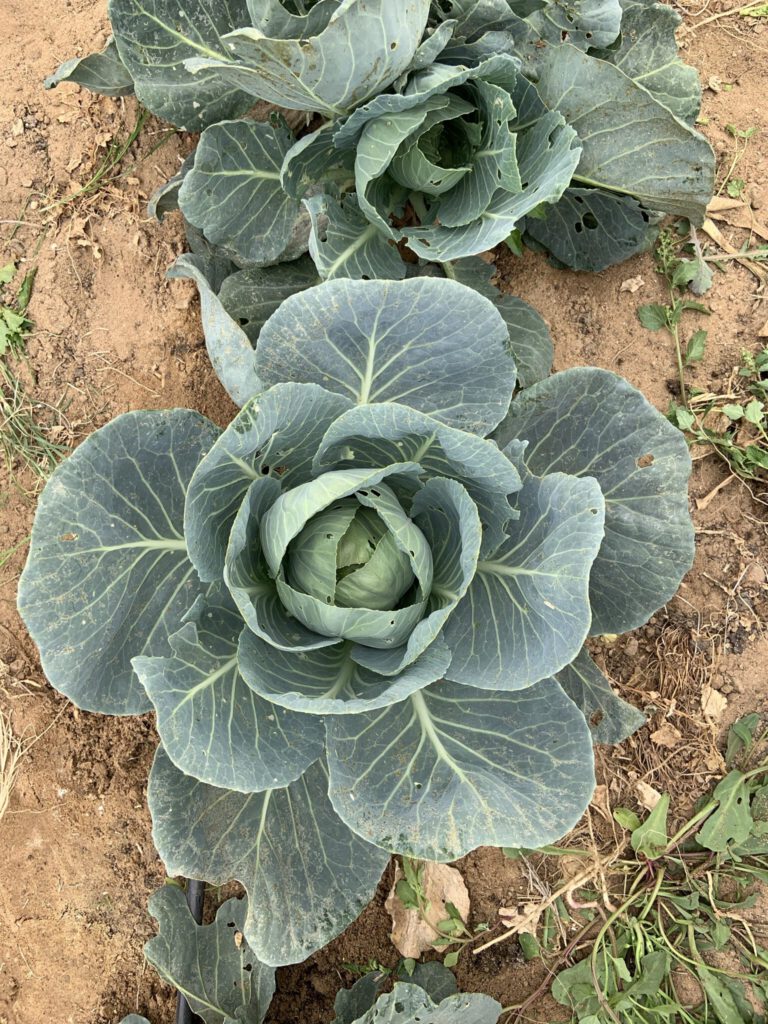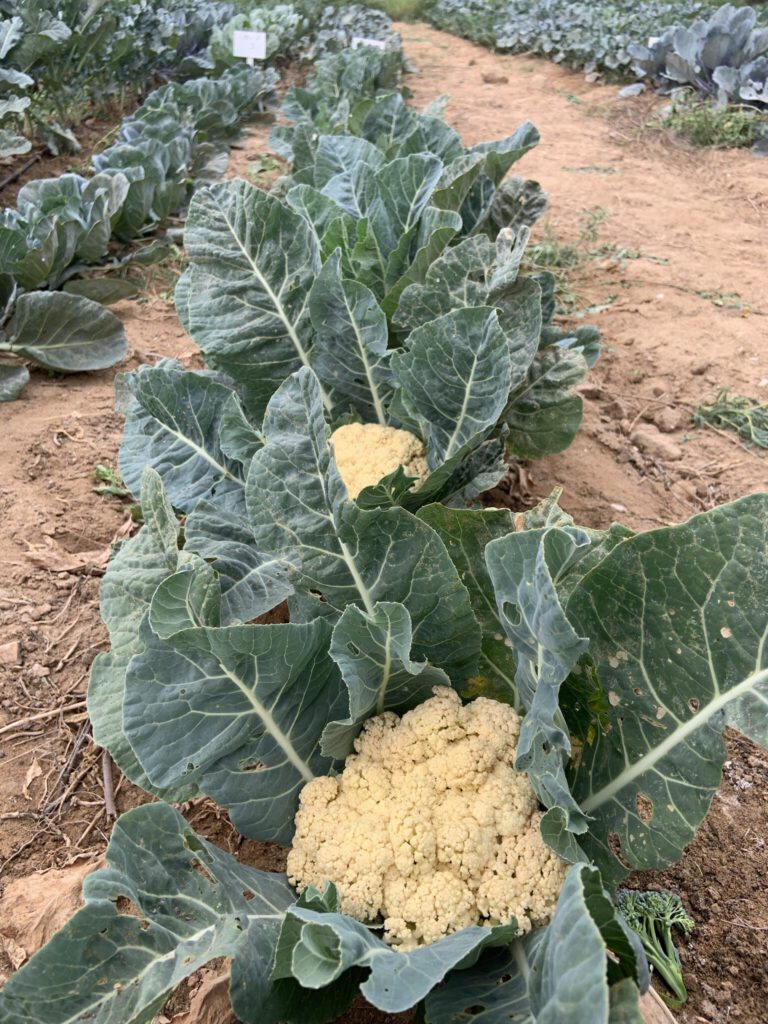During the DESalt project, we have grown a number of vegetable crops under -sometimes highly- saline conditions. This is a challenge and not all of our attempts have been successful, but mostly they have been, and a trial using extra compost for potato production under saline conditions has been very successful and published in a publication of the FAO, together with an economic analysis that showed that the extra input costs were worth the investment.
One complicating factor was that the field where we performed most of our crop trials was very saline and also very heterogeneous in salinity levels. The least saline corner of the field had salinity levels (expressed as the Electrical Conductivity of an extract of a soil paste, the ECe) between 8 and 12, depending on the time of year and irrigation regime, and the most saline corner of the field had soil ECe levels of 20 or even higher. These are very high levels, considering the soil ECe levels of 2-4 are already considered to be mildly salinity-affected soils. At values above 16, non-halophyte crop production is generally considered impossible.
Crops growing under saline conditions face two stresses: the low osmotic potential of the soil leads to difficulties taking up enough water for the crop, akin to drought stress. Additionally, high concentrations of (sodium)ions in the soil solution can lead to the accumulation of these ions in the plant tissue (usually in the leaves since that is where the water exits the plant through the stomata during photosynthesis). High levels of sodium in plant tissue are toxic to the plant. Additionally, the plants may have problems absorbing other essential nutrients such as potassium.
Therefore, the crops can use all the help we can provide for them. When being cultivated under saline conditions. For successful saline agriculture, the farmer needs to take special care to optimize the physical, chemical, and biological aspects of the soil. Additionally, bed preparation requires special attention and an adequate irrigation regime and -method is also essential.
Another method that has been shown to improve crop performance is the application of Bacteria. We have done multiple tests with these bacteria and the results were – albeit not statistically significant – encouraging, showing a positive trend of the bacteria-treated crops. Below, the results of the application of Bacteria are presented in more detail, and we can see that on average, over three different crop types, the yield increased by about 10%.
The crops we cultivated during the DESalt project were very diverse, from nitrogen-fixing legumes such as Sesbania sesban and Berseem clover (Trifolium alexandrinum) to common vegetable crops such as various Brassicas (cabbage, cauliflower, etc.), tomatoes and potatoes, to more tolerant crops such as red beets and Sorghum, and even up to true halophytes such as Salicornia spec. Especially the more tolerant species such as the beets and the Sorghum showed very good results, with high yields at salinity levels up to 20 dS/m, about half the salinity level of seawater. All in all, the DESalt project has taught us important lessons on crop cultivation under saline conditions, and the Egyptians have seen with their own eyes that crop cultivation under saline conditions is still possible, and even profitable, as shown by the potato example (link to publication)
Results of the application of Bacteria to improve crop yield under saline conditions- Materials and methods
In the summer of 2021, 13 crops (varieties) were cultivated on a field of half a feddan (0,21 ha) in Egypt, at the biodynamic farm of Sekem. The crops were red beets (Beta vulgaris, three varieties), and a number of Brassicas (Brassica oleracea) namely: white cabbage (two varieties), red cabbage (three varieties), cauliflower (three varieties), and broccoli (two varieties). Salinity (ECe) levels in the field are high and range from 20 dS/m on one side of the field where the beets were cultivated, to between 8-12 on the other side of the field where the Brassicas were being cultivated. We have looked at the effect of the bacteria application on the size of the harvestable products (so beets, heads of cabbage, cauliflower, etc., hereafter called ‘fruits’) because not enough data on yield (i.e in kg/m2 or t/ha) was available. All species-treatment combinations have been replicated, depending on the crop and variety the number of replicas of both treatment and control was either 5 or 6.
Additionally, the same bacteria were applied to tomatoes (two varieties) during the winter season of 2021-2022. The number of replicas in the tomato trial was 4. The results of those two trials will be presented separately and combined. Because the sizes of the different ‘fruits’ in this analysis differ considerably, we normalize fruit size by dividing the fruit size of both the control and the treatment replicas by the mean fruit size of the controls. This results in the mean fruit size of the control treatment of being exactly 1 on average.
Results- Summer season 2021
There was a positive albeit non-significant effect of the Bacteria application on the sizes of the fruits in the summer season of 2021 (ANOVA, p = 0.069, no significant effect of crop identity and no significant interaction between treatment and crop identity; see figure 1). So, all crops responded the same to the Bacteria.


